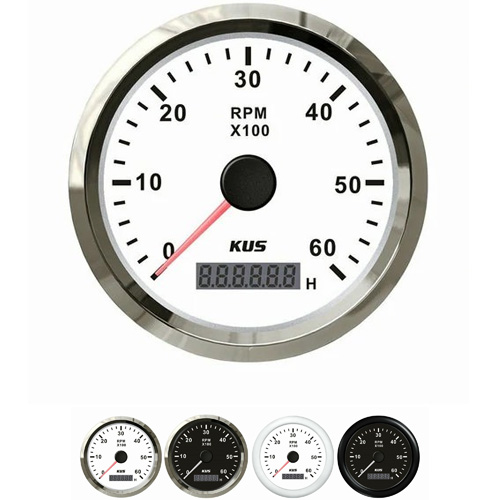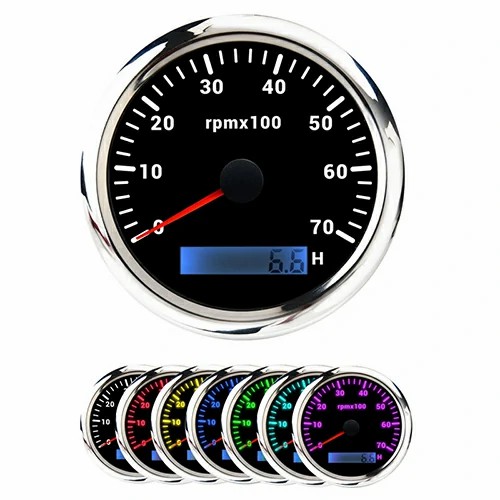a tachometer is used to measure
What is the tachometer used to measure? We usually measure the crankshaft speed to determine the engine speed, and the crankshaft speed is usually measured through the signal panel installed on it. Therefore, tachometer is a very important instrument.
It can be measured in the following three ways:
1.Electromagnetic pulse sensor , The principle of measuring speed is: when the signal disk rotates, the disk teeth cut the magnetic field formed by the magnetic core of the sensor, resulting in magnetic induction, causing the coil in the sensor to generate alternating voltage and output pulse signal. The frequency of the pulse signal is directly proportional to the speed of the signal panel. The speed of the engine can be obtained by calculating the frequency of the pulse signal and the number of teeth of the signal panel.
2.The principle of measuring rotational speed by Hall sensor is that when the hall element is placed in the magnetic field, a current perpendicular to the magnetic field is connected to both sides of the hall element (such as the upper and lower sides), and a Hall voltage will be generated on the other two sides (left and right sides). When the signal panel rotates, the impeller of the signal panel will cut off the magnetic field, the Hall voltage will disappear, and the sensor will output a rectangular pulse signal. For each revolution of the signal wheel, the number of sensor output signals is equal to the number of notches (or blades) on the signal wheel, so as to calculate the engine speed.
3.The principle of photoelectric sensor is: when the photosensitive element is illuminated, the working characteristics will change from open circuit to path (inaccurate, let's understand it). Light transmission holes are processed on the signal panel, and light-emitting diodes and photosensitive elements are installed at the front and rear of the signal panel respectively. As the signal panel rotates, when the light emitted by the LED is blocked by the signal panel, the photosensitive element outputs low voltage; When the light emitted by the light-emitting diode shines on the photosensitive element through the light transmitting hole, the photosensitive element outputs high voltage. Through this change, the sensor can output a rectangular wave and calculate the speed according to the frequency of the wave.
There is also a method to measure the engine speed, not directly measure the crankshaft or camshaft, but the ignition signal. The disadvantage is poor accuracy.
 English
English 



Get a Quote / Info